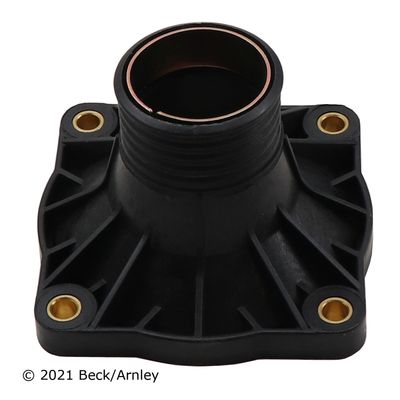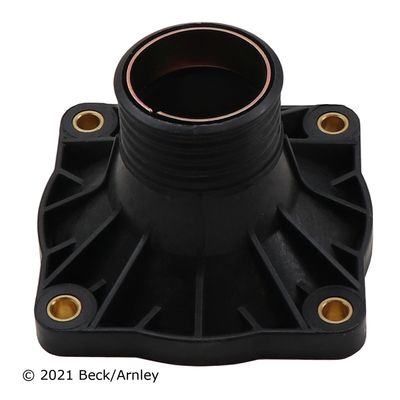Answer
Aug 15, 2024 - 08:05 AM
Repairing a thermostat housing is generally not recommended, especially if it is significantly damaged. The thermostat housing is a critical component of your vehicle's cooling system, and any compromise in its integrity can lead to coolant leaks, engine overheating, and potentially severe engine damage. However, minor issues with the housing can sometimes be addressed temporarily, but replacing the housing is usually the best long-term solution.
Situations Where Temporary Repairs Might Be Possible:-
Minor Cracks:
- Epoxy or Sealant: If the thermostat housing has a minor crack or small leak, you might be able to use a high-temperature epoxy or sealant as a temporary fix. Clean the area thoroughly before applying the epoxy, and make sure it's fully cured before refilling the coolant. However, this is only a temporary solution, and the housing should be replaced as soon as possible.
-
Gasket Replacement:
- Replacing the Gasket or O-Ring: If the leak is due to a damaged gasket or O-ring, you can often repair the issue by replacing the gasket or O-ring and properly resealing the thermostat housing. Ensure the surfaces are clean and smooth before installation to avoid future leaks.
-
Loose Bolts:
- Re-Tightening Bolts: If the housing is leaking due to loose mounting bolts, tightening them to the proper torque specification may resolve the issue. Be careful not to overtighten, as this can crack the housing.
-
Significant Cracks or Breaks:
- If the thermostat housing has significant cracks, breaks, or severe warping, it should be replaced rather than repaired. Such damage compromises the housing's ability to seal properly and can lead to coolant leaks and engine overheating.
-
Corrosion or Erosion:
- Corrosion or erosion of the thermostat housing, particularly in metal housings, weakens the structure and can lead to leaks. In this case, replacement is the best option.
-
Repetitive Leaks:
- If you’ve attempted to repair the housing and it continues to leak, this indicates that the repair isn’t holding, and the housing should be replaced.
- Durability and Safety: A new thermostat housing will provide a reliable seal and restore the integrity of the cooling system, ensuring proper coolant flow and engine temperature regulation.
- Cost-Effectiveness: In the long run, replacing the thermostat housing is more cost-effective than dealing with repeated repairs, potential engine damage, and the risk of breakdowns.
While minor issues with the thermostat housing can sometimes be temporarily repaired using epoxy, sealants, or by replacing gaskets, significant damage such as cracks, warping, or corrosion typically requires the thermostat housing to be replaced. Replacement is the safest and most reliable solution to ensure the proper functioning of your vehicle’s cooling system.





Add New Comment